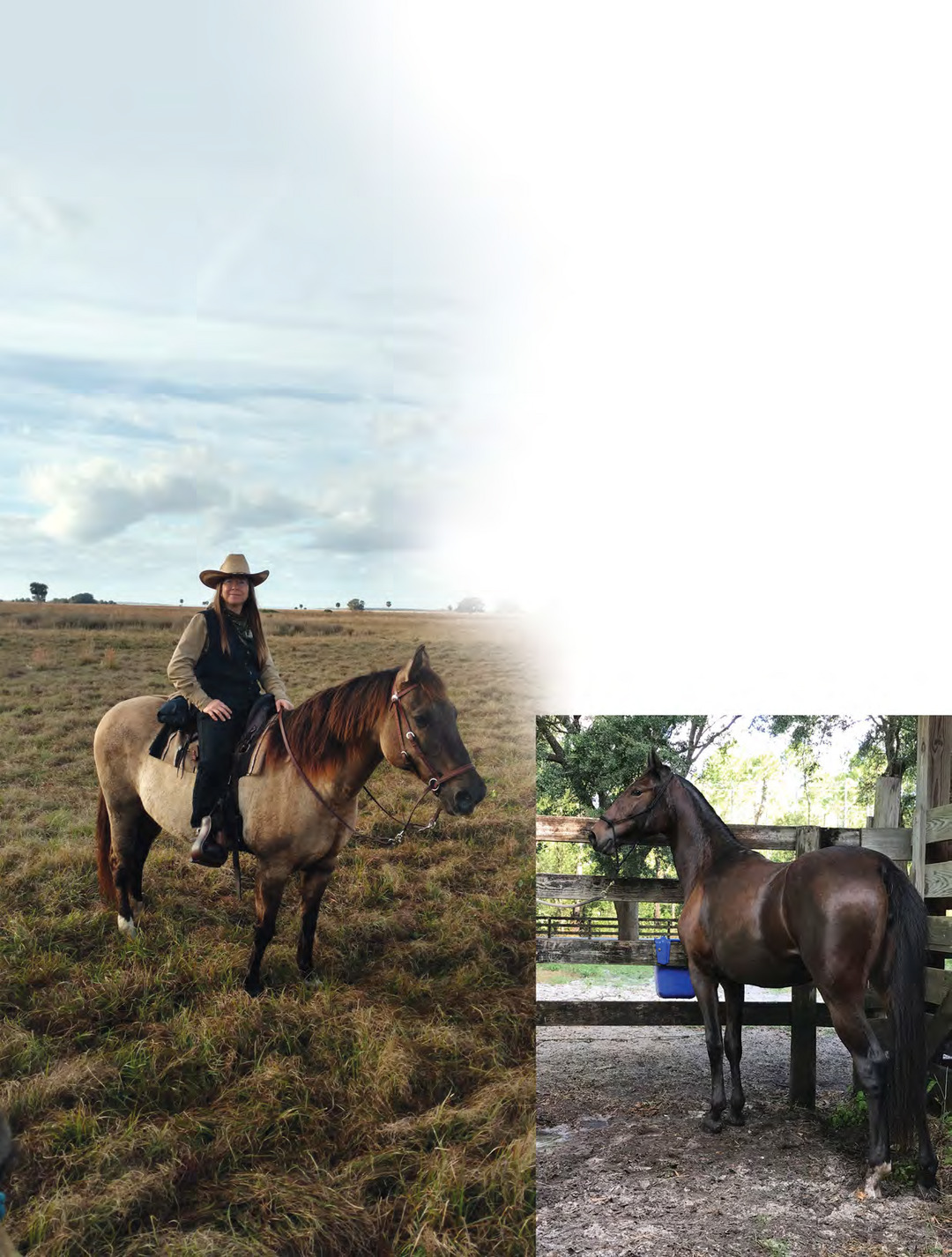
3 minute read
EQUINE OCULAR DISEASE IS COMMON

EQUINE OCULAR DISEASE IS COMMON
ALWAYS TREAT ANY UNUSUAL EYE PROBLEM AS AN EMERGENCY
Written by: Susan E. Blackwell, CVT
A horse with a painful, squinty, swollen eye is an obvious cause for concern—especially if the eye has a thick or discolored discharge. Ocular disease is common in the horse and may manifest itself by presenting redness, tearing, squinting or cloudiness of the eye, along with a vision problem.
Equine eye problems can include simple sources of irritation such as allergies or insects. Or the problems can range from the hereditary breed disposition of uveitis to the very complex treatment process of a variant type of corneal ulcers and lacerations.
ALLERGIES OR IRRITANTS Absent any other signs of trouble, a horse who consistently has tears running down its face may have a blocked tear duct. Technically called nasolacrimal ducts, these tiny passages drain excess tears from the eyes through the nose. When these ducts become blocked, tears collect and spill over the bottom lid. Ducts become blocked for a variety of reasons, including the mucus in equine tears and the simple fact that some horses have narrower ducts than others. A veterinarian can flush a duct by running a small tube up through the horse’s nose into the end of the channel. Then a squirt of saline will usually clear the blockage. During early morning and late evening turnout, management of the equine eye should also include insect control. Make use of fly masks, stall fans and insect repellent.
UVEITIS Another common equine ophthalmic disease is uveitis, which is often called “moon blindness.” It is an immune-mediated disease that is typically recurring. It can be a lifelong, painful condition of the eye that is often hereditary in some horse breeds such as Appaloosas. Symptoms include extreme watering of the eyes, sensitivity to light and swollen eyelids, along with diffuse cloudiness present in the globe of the eye. Uveitis is extremely painful and can affect either or both eyes of the horse. Common managing treatments may include both topical and oral antiinflammatories, and in severe cases, removal of the affected eye in order to eliminate the pain.
CORNEAL ULCERS A corneal ulcer is another one of the most commonly acquired ocular diseases in the horse. It often develops in the horse after something environmental— such as a fly mask, hay or tree limb—has scratched the outer layer of the cornea (clear globe portion of the eye). Clinical signs include squinting, excessive tearing, swollen eyelids and a reluctance to hold the eye open. Corneal ulcers are painful and are prone to infection, along with fungal involvement. Vigilant medical management generally includes treatments every four to six hours of topical administration of atropine to keep the eye diluted, topical antibiotics, topical antifungals, autologous serum and oral anti-inflammatories. Corneal ulcers should always be considered an emergency. If severe and left untreated, the infection could potentially lead to a ruptured eyeball.
CORNEAL LACERATIONS The final common eye condition is a penetrating corneal laceration. Lacerations can often be caused by a blow such as a kick, or by a horse running into a fixed object. Symptoms can include any of the following: blood inside the eye globe, prolapsed iris, pus inside or draining from the eye, excessive tearing, swollen eyelids and/or a defect in the cornea. This is an immediate emergency that is often referred to a specialist for the best possible vision assessment, treatment options and prognosis.
In conclusion, any unusual equine eye problem such as tearing, squinting or change in the appearance and/or color of a horse’s eye should always be treated as an emergency. Seek medical attention with an ophthalmic exam from a veterinarian. With prompt and aggressive treatment, there is often an excellent prognosis for most equine ocular diseases.

Equine eye problems range from sources of irritation to hereditary problems to corneal ulcers and lacerations.

Equine eye problems range from sources of irritation to hereditary problems to corneal ulcers and lacerations.

FLORIDACOUNTRYMAGAZINE.COM 11






